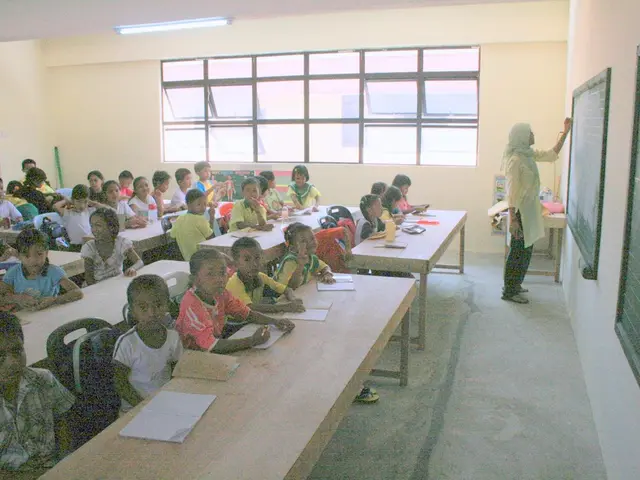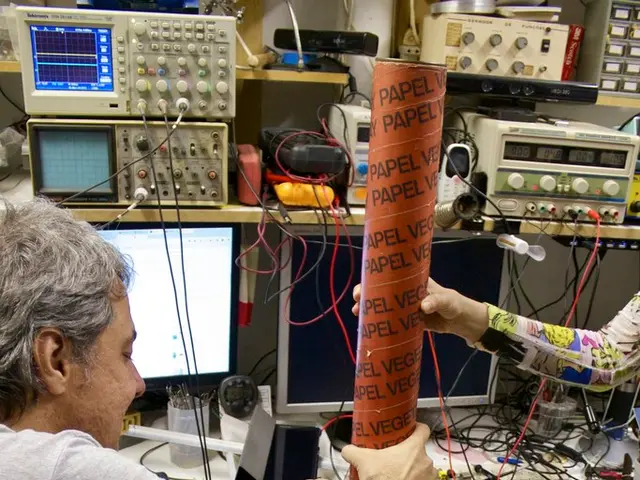Title: Embracing AI and NGSOs: Shaping the Future of Mobile Connectivity
Suhail Syed, serving as the CSO at Vesper Telecom, brings decades of experience in ICT, IoT, DC, healthcare, and mobility, championing innovation and growth.
Innovative ideas, such as AI and cutting-edge satellite technologies, like non-geostationary satellite orbit (NGSO) services, such as SpaceX's Starlink, are reshaping global access. AI is already revolutionizing mobile and smart networks, while new satellite technology is poised to disrupt traditional mobile operators, compelling them to adapt to these innovative changes.
With over two decades of experience in managing telecom networks, I am focused on the disruption and innovation transforming the industry. Led by 5G, IoT, and AI, mobile operators must evolve or risk becoming obsolete. In this article, I will discuss the critical shifts and strategic moves operators must implement to remain competitive in a dynamic market.
The Intersection of AI and Satellite Connectivity
Mobile networks would be less productive, less personalized, and less secure without AI integration. And satellite technology has revolutionized the telecommunications field, reshaping it beyond anyone's wildest imaginations.
One such innovation driving this change is satellite internet, exemplified by SpaceX's Starlink initiative. This constellation of Low-Earth Orbit (LEO) satellites signifies a significant leap in providing broadband connectivity, bypassing traditional cellular towers and terrestrial infrastructure. By offering direct internet access to users' phones, it bridges the "digital divide," delivering connectivity to previously disconnected regions due to geographical or infrastructural challenges.
Starlink's Advantage
The Shift from Buffer to Buffet Zones:What sets Starlink apart is its commitment to providing internet connection from "buffer" zones with unreliable or no service to "buffet zones," offering comprehensive, high-performance connectivity. Starlink's expansion into Africa underscores its transformative potential in underserved regions.
Cost-Effective Scaling:Traditional network expansion is capital-intensive but scalable with LEO satellites, enabling rapid, cost-effective deployment. Integrated with AI-driven network optimization tools, Starlink can enhance operational efficiency with real-time monitoring, predictive maintenance, and automated resource allocation. This holistic approach reduces costs and improves service quality.
Mobile Operators: Navigating the Future
Integrating satellite technology into mobile networks presents challenges.
Technical Challenges:For mobile operators, integrating LEO satellites into existing infrastructure involves complex technical and operational hurdles. Operators must implement new backhaul systems and establish service management protocols to ensure smooth integration.
Regulatory Constraints:Navigating legal and licensing requirements for satellite communication, which vary across regions, can delay deployment and increase operational risks.
Data Privacy Concerns:Satellite networks transmit data across borders, making compliance with local data protection laws and regulations challenging. For instance, addressing EU General Data Protection Regulation (GDPR) requirements in cross-border data transmission could be challenging for Starlink.
Customer Perception:Many customers remain skeptical about satellite internet performance, given potential challenges due to weather conditions and coverage reliability. Moreover, the need for specialized equipment complicates the adoption process.
Despite these challenges, advancements like Starlink present opportunities for traditional mobile operators to reinvent themselves.
Embracing Digital Transformation:Operators can leverage AI to streamline operations, lower costs, and improve service quality. By adopting technologies like predictive analytics and automated customer support, mobile operators can enhance competitiveness.
Partnerships and Collaborations:Instead of viewing satellite providers as competitors, mobile operators could form strategic partnerships. By integrating satellite coverage with existing networks, they can offer hybrid solutions combining the strengths of both technologies.
Shift to Value-Added Services:To stay relevant, operators must diversify their offerings beyond connectivity. This could involve developing digital services.
Conclusion
Starlink and other NGSO services aim to offer internet access to everyone, everywhere. By integrating AI, satellite connectivity can improve networks, enhance customer experiences, and support the development of digital services. Traditional mobile operators must adapt to these changes, embracing digital transformation, forming strategic partnerships, and shifting their focus to value-added services to remain competitive.
Suhail Syed, with his extensive experience in ICT, IoT, DC, healthcare, and mobility, could potentially leverage Starlink's advancements to innovate and enhance the services offered by Vesper Telecom.
With Suhail Syed's expertise, Vesper Telecom could capitalize on Starlink's potential to bridge the digital divide, provide cost-effective solutions, and improve network efficiency with AI integration. This collaboration could help Vesper Telecom remain competitive in a dynamic industry.






